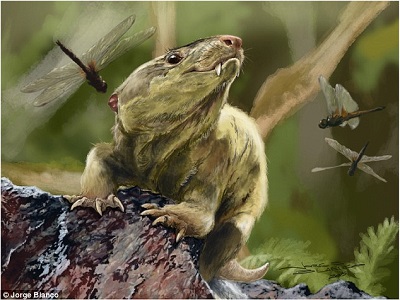Two new species of cynodonts have been identified after sitting undiscovered in a museum for decades.
The ancient creatures are thought to mark the evolutionary step between reptiles and mammals.
The bizarre specimens feature reptile-like bodies, mammal-like skulls and jaws that are thought to be among the oldest ancestors of mammals.
The animals were among the first to display mammal-like features.
The two preserved skulls and two jaw remnants are thought to be between 237 million and 235 million years old.
These new fossils help [us] understand in more detail the evolution of pre-mammalian forms that gave rise to the group of mammals, in which we humans (Homo sapiens) are included,’ the study’s lead author, Agustín Martinelli, a paleontologist.
The earliest cynodants fossils date back to around 260 million years ago – during the Permian period – predating dinosaurs.
The new species belong to the carnivorous probainognathians group of cynodants, say the researchers.
The unusual creatures are thought to be the earliest ancestors of modern day monotremes – mammals that lay eggs – such as the platypus and the echidna.
The B. schultzi fossil is thought to belong an animal measuring around 12 inches (30cm) long.
The extinct animal had distinctly large upper canine teeth, leading the researchers to believe that it ate insects.
The S. abdalai was around half the length, though the fossil only shows a lower jaw.
It is hoped that the find will help researchers to investigate diverse characteristics of the cynodonts and shed new light on how mammals first developed.
Source: Daily mail
N.H.Kh

